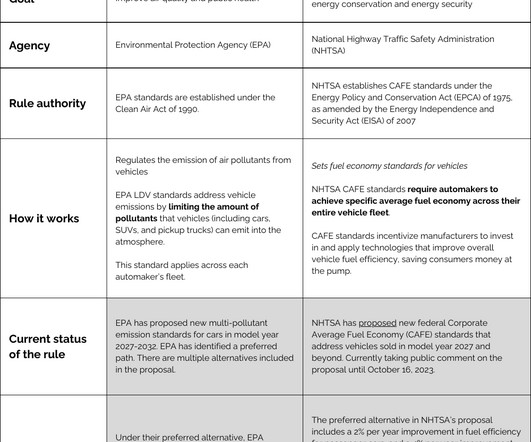EPA annual trends report finds new vehicle fuel economy at record 24.1 mpg; new powertrain technologies rapidly gaining share
Green Car Congress
OCTOBER 10, 2014
mpg increase over the previous year and an increase of nearly 5 mpg since 2004. Fuel economy has now increased in eight of the last nine years; average carbon dioxide emissions are also at a record low of 369 g/mile in model year 2013. Since 1975, half of car production has consistently been within several mpg of each other.





























Let's personalize your content